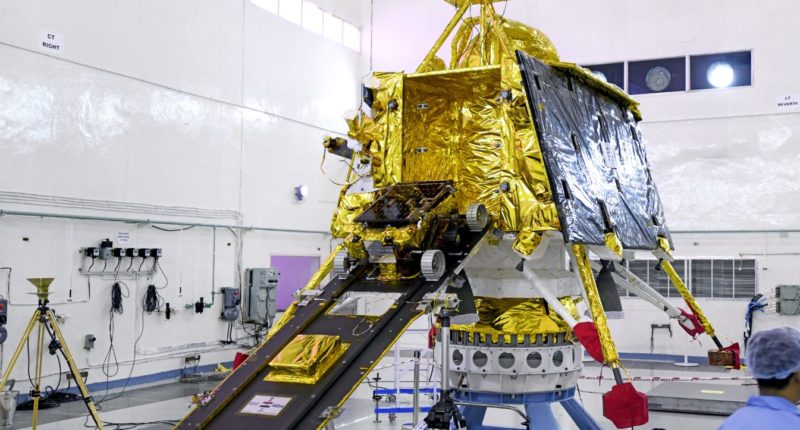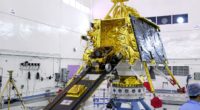Let’s first sit back and have a look at ISRO’s Journey – India’s crowned jewel.
Jan 15, 2010 : Vikram Sarabhai Space Centre Conducts a Series of Sounding Rocket Launches to Study the Annular Solar Eclipse.
Mar 26, 2015 : The 59 and half hour count-down of PSLV-C27/IRNSS-1D Mission has started at 05:49 hr IST on Thursday, March 26, 2015.
May 08, 2017 : The third orbit raising operation of South Asia Satellite has been successfully carried out by LAM Engine firing for 445.8 sec from 06:51:52 hr IST.
Jun 28-29, 2019 GSLV MkIII-M1/Chandrayaan 2: Rover after completion of all tests integrated with lander Vikram. Assembly of the batteries for all stages of launch vehicle completed.
Jul 18, 2019 : CHANDRAYAAN -2 LAUNCH RESCHEDULED ON 22ND JULY, 2019, AT 14:43 HRS.
Jul 24, 2019: First earth bound maneuver.
Aug 20, 2019 : Lunar Orbit Insertion.
ISRO’s plan to soft land the Vikram module on the lunar surface did not go as planned in the early hours of Saturday, followed by the lander losing communication with ground stations during its final plunge.
The Chandrayaan-2 mission was a highly sophisticated mission, which pictured a significant technological ascend compared to the previous missions of ISRO, which brought together an Orbiter, Lander and Rover to explore the unexplored south pole of the Moon. Since July 22, 2019, not only India but the whole world witnessed its evolution from one phase to the next with great expectations and enthusiasm. This was a one-of-its-kind mission which aimed at examining not just one area of the Moon but all the areas including the exosphere, the surface and the sub-surface of the moon in a single mission.
ISRO Chief , K Sivan has rightly said , “The purpose of science is not to look for results, its to look for experiments and the experiments with lead to results.”
Wouldn’t hate to admit that we haven’t achieved what we had dreamt for, but it’s even more true that till date 90 to 95% of the mission objectives have been accomplished and will be of great significance to Lunar science , notwithstanding the loss of communication with the Lander. Our scientists have done a great job and we India has proved to the world that a developing country CAN and it WILL !
After a failed attempt to conquer Mount Everest, Sir Edmund Hillary stated, ” I will come again and conquer you because as a mountain you can’t grow, but as a human I can.”
We WILL try again and conquer the unexplored parts of the moon because as a planetary satellite, the moon isn’t changing any sooner, but ISRO , as an organization, will learn and grow till the goal is achieved.
The Orbiter has already been placed in its intended orbit around the Moon and using its eight state-of-the-art scientific instruments, it shall enrich our understanding of the moon’s evolution and mapping of the minerals and water molecules in the Polar Regions.
The successful landing would have made India the first to launch a mssion to the unexplored south pole of the moon, and the fourth country after Russia, the US and China to execute soft landing on the moon.
Dr. Abdul Kalam had said, “When failure occurred, the leader of the organisation owned that failure. When success came, he gave it to his team. The best management lesson I have learned did not come to me from reading a book; it came from that experience.”
Confirming that the orbiter had been placed in its intended orbit, ISRO remarked, “It shall enrich our understanding of the moon’s evolution and mapping of the minerals and water molecules in the polar regions using its eight state-of-the-art scientific instruments.”
In addition to this ISRO stated that the precise launch and mission management has ensured a long-life of about 7 years instead of the previously commissioned one-year-plan. ISRO also claimed that the Orbiter Camera was so far the highest resolution camera to be implemented in a lunar mission , and will continue providing high resolution images that will be of immense help to the global lunar-science community.
The Vikram lander lost contact with ground stations before its touchdown on the moon’s surface. With reference to this an ISRO official stated that the Chandrayaan-2 orbiter is “healthy and safe” in its lunar orbit.





